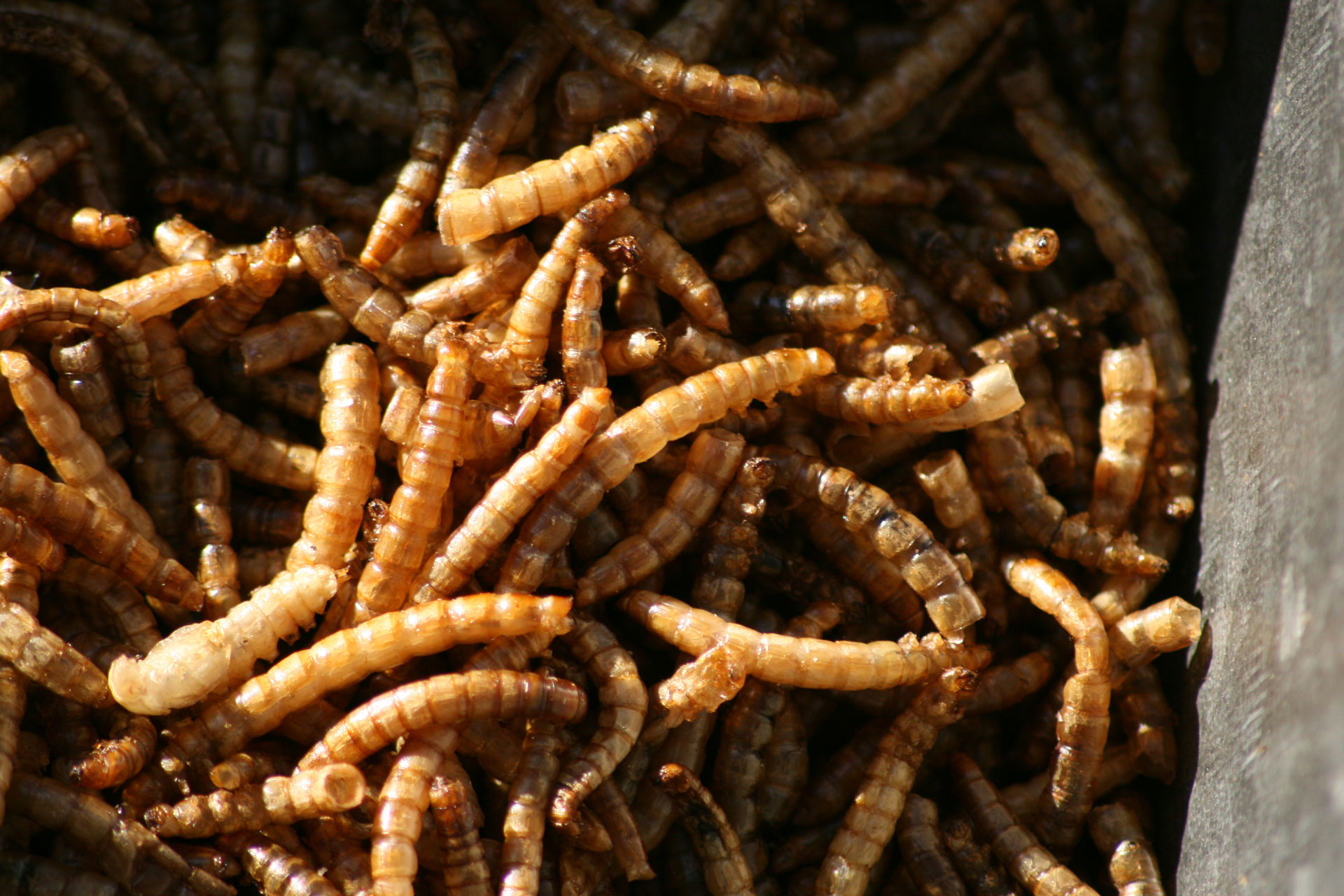By definition, anything that was or is alive is considered organic matter because it contains carbon-based compounds. This article covers some of the considerations around using organic soil amendments. The most common types of soil organic amendments are manure, compost, and crop residue (including cover crops).
Why We Care About Carbon
Soil carbon is important in all farming systems because of the role it plays in building and maintaining soil microbial communities. Soil microbes are critical for nutrient cycling and building soil structure because soil aggregates are held together by organic compounds produced by microbes, by fungal hyphae, and by plant roots. In addition, soil microbes are responsible for many parts of the N cycle, like converting ammonium to nitrate, the form of nitrogen most commonly taken up by plants. Even if there is sufficient total N in the soil, microbial processes will be slowed by reduced activity due to low soil carbon, cold soil temperatures, or inadequate soil moisture.
The amount of carbon to nitrogen (C:N) affects microbial breakdown of organic amendments, and thus potential nitrogen (N) release. Like us, microbes have dietary needs that have to be met. The ideal diet for microbes has a C:N ratio between approximately 20:1 and 25:1. Nitrogen is present in the soil and in soil water. When microbes consume material with a higher C:N ratio than their ideal diet, they will “mine” N from the soil profile for their own use, making it unavailable (sometimes called “tied up”) for crop uptake. It is not permanently lost from the system as with N leaching or volatilization. Rather, it is unavailable in the short term until the microbes die. When microbes consume materials with a lower C:N ratio than their ideal diet, they release the N that is in excess of their dietary needs that is immediately available for crop uptake.
Considerations for Organic Amendment Selection
Material Efficiency: The C:N ratio of the material affects both the amount of N that will released for plant uptake, and the time in which the N will become plant available. Materials with a lower C:N ratio are broken down more rapidly and a larger proportion of the N will become available during the growing season. Materials with a higher C:N ratio are broken down more slowly and a lower proportion of the N becomes available. These materials need to be applied in larger quantities and earlier in the season to meet crop N demand during peak uptake. In contrast, the nitrogen in materials with a very low C:N ratio, such as feather meal, guano, or some liquid products, becomes available very quickly. These products provide the opportunity for in-season applications through fertigation or side dressing, similar to synthetic fertilizers.
Material Costs: With organic amendments that are high enough in N to be used as an N source, cost per unit available N is more relevant than cost per unit weight. However, this may not be the only consideration. How much the material costs to transport and spread can eat into your bottom line quickly. Watch for percent moisture because this affects nutrient calculations (which should be based on dry weight) and it’s expensive to move water.
Calculate the true cost of organic amendments when deciding what material to use, including percent moisture. This includes product versus management costs to estimate how much a pound of N actually costs with each product for the growing season. In the short term, the goal may be to meet the demand of your current crop. In the long term, the goal is to build soil structure and fertility.
Management Considerations: Fresh manures can contain a large proportion of ammonium-N and can lose a substantial amount of N to the atmosphere if they are not tilled in soon after application. Manures can also be a source of weed seeds.
A Focus on Compost
Compost is any product that results from the decomposition of organic material. Since the material that goes into compost can vary widely from food and yard waste to wood chips to animal manure, the fertility and benefit to agronomic productivity is also quite variable. Not all compost is the same and the expected performance of a compost on a farm is related to the starting material and properties of the finished product.
While all composts will have the benefit of adding organic matter and increasing soil carbon, the benefits of which are outlined above, not all will be suitable to meet the nutrient needs of a crop. Manure-based composts are higher in fertility than green waste (i.e. yard trimmings) and it would be very difficult to meet crop nutrient needs with green waste compost. For example, while a typical chicken manure compost has a nutrient content of 44 lb nitrogen, 26 lb phosphorus, and 33 lb potassium per ton, a typical yard debris compost only has 18 lb nitrogen, 3 lb phosphorous, and 8 lb potassium per ton. Not only is the nitrogen content lower in yard debris compost, but a smaller proportion of it will become available during the next growing season.
There are advantages and disadvantages to using compost over fresh materials. The volume of composted versus fresh material generally decreases by 30 to 60 percent and compost is easier to spread. Compost has a lower risk of containing weed seeds or pathogens and is less likely to degrade water quality. Since compost has already been decomposed, it contains more stable carbon and less carbon is lost to microbial decomposition. This means that less nitrogen will be tied up for a high C:N ratio of composted material than when applying the fresh form of the same material. However, this also means that compost can also be very slow to release nutrients. Compost can improve the physical, biological, and chemical properties of a soil including reducing erosion, increasing water holding capacity, and moderating soil temperature. For these reasons, compost can be an excellent soil builder and can lead to improved soil function, but it is important to evaluate the properties of the compost before application and know what you are using it for.
Matching Crop Need to Application of Manure or Manure-Based Composts
When applying manure or manure-based compost to meet crop N needs, there may be over application of other nutrients. This is because:
- These materials contain micro and macro nutrients other than N.
- They are lower in percent N (and other essential nutrients) than synthetic fertilizer and require higher application rates to achieve crop nutrient needs.
- Organic N needs to be mineralized in order to be plant available and not all the N will become available for the current crop.
Consider the following example. If you are planting corn and plan to apply composted chicken manure to meet crop N demand, you can expect approximately 35 percent of the N to be mineralized in year one and available for plant uptake. While nutrient concentrations can vary due to bedding material and maturity of the compost, typical chicken manure compost (sometimes referred to as broiler chicken litter) has a nutrient content of 44 pounds N, 26 pounds phosphorus (P), and 33 pounds potassium (K) per ton.
Based on the California fertilization guidelines, recommended total N application rates for high-yielding corn are generally 200 to 275 pounds N per acre. Let’s assume our goal is 225 pounds N per acre for the calculation below. Given that only 35 percent of the N will be mineralized in year one, you will have to apply a higher amount of compost to ensure enough is available for your crop in that year.
225 lb. N required ÷ 0.35 = 643 lb. N/A needed to apply to meet corn demand.
Given the amount of N in each ton of compost, you will need to apply:
643 lb. N/A ÷ 44 lb. N/ton = 14.5 tons/A of compost (29,000 pounds of material).
How much phosphorous will be in that compost application?
14.5 tons x 26 lb. P/ton = 377 lbs. of P/A (this is 867 lb. P2O5)
According to California fertilization guidelines, P should be applied based on crop removal and 60 to 80 pounds of P2O5 are removed when corn grains are harvested from the field and 60 to 100 pounds with silage corn.
This means, that you are applying 8 to 14 times more P in one year than your crop needs! Consider the nutrient loading that will occur if these elevated manure levels are applied year after year to meet the crop N demand. While it is unlikely that anyone would apply this amount of material to a field in one growing season, this example can serve to highlight the considerations for managing fertility organic amendments.
It can be challenging to balance nutrients with organic materials and, when possible, consider other sources of amendments with different levels of NPK. While there is no inherent risk in having too much P to your crop, P contaminates waterways when soil moves off the field through erosion or runoff and is one of the main drivers of eutrophication. In addition, some organic amendments can be high in salts and can lead to salt build up in time. Efficient application of organic amendments is important. In certified organic systems, consider incorporating legume cover crops into your rotation to ensure adequate soil N levels while reducing the risk of overloading other nutrients. Non-legume cover crops can also improve nutrient cycling and reduce the risk of nitrate leaching.
If organic amendments are added consistently year after year, the soil structure is improved, which reduces the risk of soil erosion. In addition, N cycles can become tighter. The 65% of N that wasn’t mineralized in year one in the example above may become available in future years although this is hard to account for in N budgeting. Organic amendments can build microbial activity, soil structure, soil fertility, and soil health. However, it can be more challenging to manage them to meet annual crop N demand than with synthetic N fertilizer.






